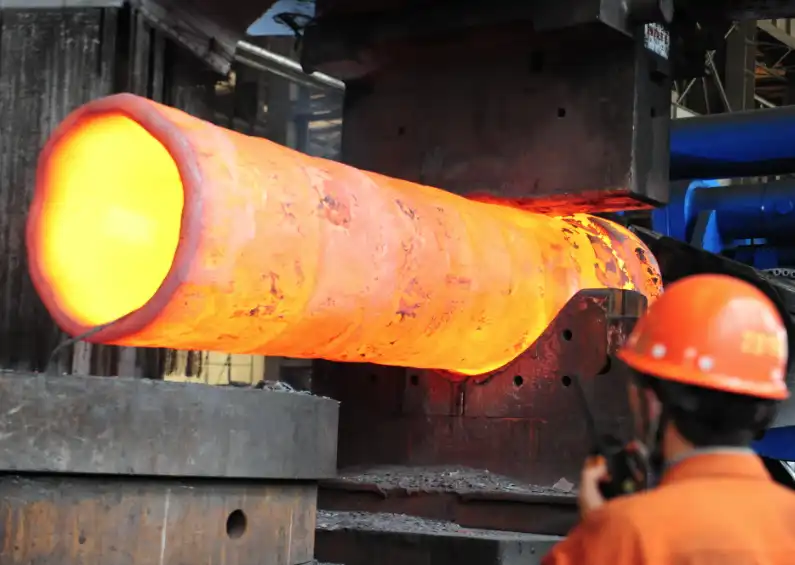What are the Key Benefits of Die Forging in Terms of Material Properties?
Enhanced Strength and Durability
Die forging is renowned for its ability to produce parts with superior strength and durability compared to other manufacturing processes. During the die forging process, the metal's grain structure is realigned and refined, resulting in a more uniform and compact arrangement. This transformation leads to improved mechanical properties, including increased tensile strength, yield strength, and fatigue resistance. The realignment of grains also enhances the part's ability to withstand stress and resist deformation under heavy loads. As a result, die-forged components are often chosen for critical applications in industries such as aerospace, automotive, and heavy machinery, where reliability and longevity are paramount.
Improved Toughness and Impact Resistance
Another significant advantage of die forging is the enhancement of a material's toughness and impact resistance. The forging process creates a continuous grain flow that follows the contours of the part, resulting in a more cohesive and resilient structure. This characteristic is particularly beneficial for components that are subjected to sudden impacts or cyclical stresses. Die-forged parts exhibit superior resistance to crack propagation and are less likely to fail under extreme conditions. This improved toughness makes die-forged components ideal for use in high-stress environments, such as in mining equipment, construction machinery, and military applications, where failure could have severe consequences.
Reduced Internal Defects and Porosity
Die forging offers a significant advantage in terms of reducing internal defects and porosity in metal components. Unlike casting processes, which can result in trapped gases and shrinkage cavities, die forging eliminates these issues through the application of intense pressure and controlled metal flow. The high compressive forces used in die forging effectively close any pre-existing voids or defects in the metal, resulting in a more homogeneous and dense structure. This reduction in internal defects translates to improved overall quality, reliability, and performance of the forged parts. Additionally, the reduced porosity enhances the corrosion resistance of the components, making them more suitable for applications in harsh environments or those requiring strict quality standards.
How Does Die Forging Contribute to Cost-Effectiveness in Manufacturing?
Reduced Material Waste
Die forging is highly regarded for its ability to minimize material waste during the manufacturing process. Unlike subtractive manufacturing methods such as machining, die forging is a near-net-shape process that requires minimal additional finishing. The precise control over material flow and the use of optimized die designs allow for efficient utilization of raw materials. This results in significantly less scrap material compared to other manufacturing techniques. The reduction in material waste not only contributes to cost savings but also aligns with sustainable manufacturing practices. By maximizing material utilization, die forging helps conserve valuable resources and reduces the environmental impact associated with metal production and processing.
Increased Production Efficiency
Die forging offers substantial advantages in terms of production efficiency, making it an attractive option for high-volume manufacturing. The process is highly automated and can produce complex parts quickly and consistently. Once the dies are set up, die forging machines can produce hundreds or even thousands of identical parts per hour, depending on the size and complexity of the component. This high production rate translates to lower per-unit costs, especially for large production runs. Additionally, die forging requires fewer secondary operations compared to other manufacturing methods, further streamlining the production process. The combination of high output and reduced post-processing requirements results in shorter lead times and improved overall manufacturing efficiency.
Lower Long-Term Costs
While the initial setup costs for die forging can be significant due to the need for specialized tooling and equipment, the process offers considerable long-term cost advantages. The durability and longevity of die-forged parts often result in reduced maintenance and replacement costs over the lifecycle of a product. The superior mechanical properties of forged components mean they are less likely to fail prematurely, leading to fewer warranty claims and reduced liability risks for manufacturers. Furthermore, the consistency and reliability of die-forged parts can contribute to improved performance and efficiency in the final product, potentially leading to energy savings and other operational benefits for end-users. When considering the total cost of ownership, die forging often proves to be a cost-effective choice for many applications.
What Are the Design and Quality Advantages of Die Forging?
Complex Geometries and Near-Net Shapes
Die forging excels in its ability to produce components with complex geometries and near-net shapes. The process allows for the creation of intricate features, undercuts, and varying wall thicknesses that would be difficult or impossible to achieve with other manufacturing methods. Advanced die designs and sophisticated forging techniques enable manufacturers to produce parts that closely resemble their final form, minimizing the need for extensive post-forging machining. This capability not only reduces production time and costs but also opens up new possibilities for innovative product designs. The ability to create near-net shapes is particularly valuable in industries such as aerospace and automotive, where weight reduction and performance optimization are critical factors in component design.
Excellent Surface Finish and Dimensional Accuracy
Die forging is renowned for producing parts with excellent surface finish and high dimensional accuracy. The controlled nature of the forging process, combined with precision-engineered dies, results in components with smooth surfaces and tight tolerances. This level of precision is crucial for applications where part-to-part consistency and interchangeability are essential. The superior surface finish of die-forged parts often eliminates the need for extensive surface treatments or polishing, further reducing production costs and time. Additionally, the high dimensional accuracy achieved through die forging contributes to improved assembly processes and overall product quality. In industries such as medical devices and precision machinery, where exacting standards are required, die forging provides a reliable solution for producing high-quality components.
Improved Grain Structure and Directional Strength
One of the most significant advantages of die forging is its ability to enhance the grain structure of the metal, resulting in improved directional strength. During the forging process, the metal's grain structure is reoriented to follow the contours of the part, creating a continuous and aligned grain flow. This alignment significantly enhances the mechanical properties of the material, particularly in the direction of the grain flow. The result is a component with superior strength, toughness, and fatigue resistance compared to parts produced by other manufacturing methods. This directional strength is particularly beneficial for components subjected to specific loading conditions or stress patterns. By optimizing the grain structure through die forging, manufacturers can create parts that are uniquely suited to withstand the challenges of their intended applications, leading to improved performance and longevity.
Conclusion
Die forging offers numerous advantages that make it an indispensable manufacturing process across various industries. From enhancing material properties and cost-effectiveness to enabling complex designs and ensuring high quality, die forging continues to be a preferred choice for producing critical components. Its ability to create parts with superior strength, durability, and precision makes it invaluable in applications where performance and reliability are paramount. As technology advances, die forging is likely to remain at the forefront of metal forming processes, continually evolving to meet the increasingly demanding requirements of modern manufacturing.
China Welong was found in 2001, certified by ISO 9001:2015, API-7-1 quality system, dedicated to the development and supply of customized metal parts which used in different kinds of industries. Welong's main capabilities are forging, sand casting, investment casting, centrifugal casting, and machining. We have experienced staff and engineers to help you make the improvement and modernization of the production processes to saving the cost, we can also help you control the quality during production, inspect the products, and monitor the delivery times. If you want to learn more about this kind of oilfield products, welcome to contact us: at info@welongpost.com.




